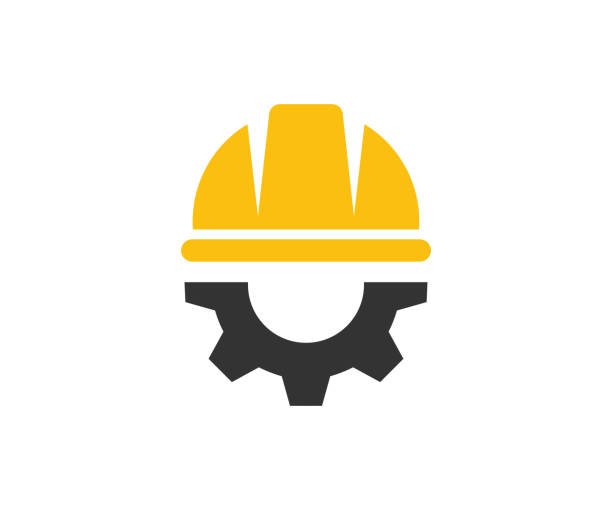Post-Tensioning in Concrete: Construction इंडस्ट्री में Concrete सबसे ज़्यादा इस्तेमाल होने वाला material है, क्योंकि ये high compressive strength और durability के लिए जाना जाता है। लेकिन Concrete की एक बड़ी कमी यह है कि यह tension में कमजोर होता है। इसी कमी को दूर करने के लिए Post-Tensioning (PT) टेक्नोलॉजी का उपयोग किया जाता है, जिससे concrete structures और भी ज़्यादा मजबूत और टिकाऊ बनते हैं।
इस पोस्ट में हम जानेंगे Post-Tensioning in Concrete से जुड़ी सभी जरूरी बातें — इसकी परिभाषा (definition), प्रकार (types), काम करने की प्रक्रिया (process), फायदे (advantages), नुकसान (disadvantages), और real-life applications।
Post-Tensioning क्या होता है?
Post-Tensioning एक ऐसी प्रक्रिया है जिसमें high-strength steel tendons (जैसे कि strands या cables) को concrete डालने के बाद और उसके मजबूत हो जाने के बाद tension किया जाता है। इसका उद्देश्य होता है concrete में compressive force डालना ताकि वो tension को झेल सके और उसमें cracks न आएं।
यह Pre-Tensioning से अलग है, जहां tendons को पहले से tension करके concrete डाला जाता है।
Post-Tensioning की ज़रूरत क्यों पड़ती है?
Concrete compression में तो बहुत strong होता है, लेकिन जब बात आती है tension की, तो उसमें weakness दिखती है। Long span structures जैसे bridges, parking garages या multi-storey buildings में tension की वजह से cracks आ सकते हैं।
Post-Tensioning technology compressive force apply करके concrete की tensile strength बढ़ाती है और structure को ज़्यादा safe और durable बनाती है।
Post-Tensioning के फायदे (Advantages)
- Crack Control – Concrete में tension कम होने की वजह से cracks नहीं आते।
- Longer Spans Possible – बिना ज़्यादा support के भी लंबी दूरी तक concrete spread किया जा सकता है।
- कम Thickness में ज़्यादा Strength – Slabs पतले बन सकते हैं लेकिन मज़बूत रहते हैं।
- Load Carrying Capacity बढ़ती है – ज्यादा वज़न झेल सकता है।
- Foundation Cost कम होती है – Lightweight structure होने से foundation cost घटती है।
- Faster Construction – Formwork जल्दी हटाया जा सकता है, जिससे समय की बचत होती है।
- Design Flexibility – Curved और modern designs भी आसानी से बनाए जा सकते हैं।
- Seismic Performance बेहतर होती है – Earthquake-resistance बढ़ जाती है।
Post-Tensioning के नुकसान (Disadvantages)
- Initial Cost ज़्यादा होती है – Machines और skilled labor की ज़रूरत होती है।
- Construction Process थोड़ा Complex होता है – हर स्टेप में quality control ज़रूरी है।
- Inspection & Maintenance मुश्किल होती है – खासतौर पर unbonded systems में।
- Corrosion का खतरा – अगर सही से grout या protection न मिले।
- Small Projects के लिए Practical नहीं – Setup cost justify नहीं हो पाती।
Post-Tensioning कैसे काम करता है – Step-by-Step Process
- Duct Placement: Formwork में ducts (plastic या metal) लगाए जाते हैं जिनमें tendons जाएंगे।
- Concrete Casting: Concrete डाला जाता है और उसे hard होने दिया जाता है।
- Tendon Installation: High-strength steel tendons ducts में डाले जाते हैं।
- Tensioning: Hydraulic jack से tendons को खींचा जाता है।
- Anchoring: Tendons को दोनों सिरों पर anchor कर दिया जाता है।
- Grouting (Bonded systems में): Ducts को grout से भर दिया जाता है ताकि tendons protect रहें।
Post-Tensioning Systems के Types
1. Bonded Post-Tensioning:
- Ducts को grout से भरा जाता है।
- Tendons concrete से permanently bond हो जाते हैं।
- Better crack control और durability मिलती है।
- Common in: bridges, slabs, buildings.
2. Unbonded Post-Tensioning:
- Tendons grout में नहीं होते, ducts के अंदर freely move करते हैं।
- Fast installation, maintenance में थोड़ा tough।
- Common in: floor slabs, buildings.
Components of Post-Tensioning
- Tendons: High-strength steel wires या strands।
- Ducts: Tendons को carry करने वाले conduits।
- Anchorages: Tendons को fix करने के लिए।
- Hydraulic Jack: Tendons को खींचने के लिए।
- Grout: (Bonded system में) protection और bonding के लिए।
Applications of Post-Tensioned Concrete
- Long-span Bridges
- High-rise Buildings
- Parking Garages
- Industrial Floors
- Water Tanks और Reservoirs
- Tall Silos और Towers
- Sports Stadiums और Auditoriums
Post-Tensioning vs Pre-Tensioning
| Feature | Post-Tensioning | Pre-Tensioning |
| Tension कब Apply होता है | Concrete set होने के बाद | Concrete डालने से पहले |
| Location | On-site | Precast factory |
| Flexibility | High | Limited |
| Common Use | Slabs, Bridges | Poles, Railway sleepers |
| Cost | High (initial) | Low (mass production) |
निष्कर्ष (Conclusion)
Post-Tensioning आज की modern construction की एक जरूरी तकनीक बन चुकी है। यह न सिर्फ concrete की performance बढ़ाता है, बल्कि structures को lightweight, cost-effective और durable भी बनाता है। हालांकि इसकी शुरुआती लागत थोड़ी ज्यादा होती है, लेकिन long-term benefits इसे एक smart investment बनाते हैं — खासतौर पर large-scale projects जैसे bridges, towers और commercial complexes में।
अगर आपको ये जानकारी उपयोगी लगी हो, तो इसे जरूर शेयर करें और construction से जुड़ी और जानकारी के लिए जुड़े रहें!
Highest-paying Construction Jobs in India | भारत में सबसे ज्यादा सैलरी वाली कंस्ट्रक्शन जॉब्स

